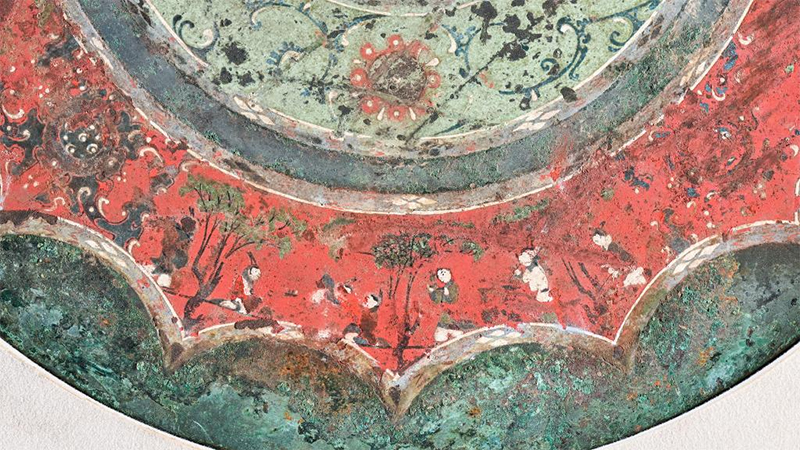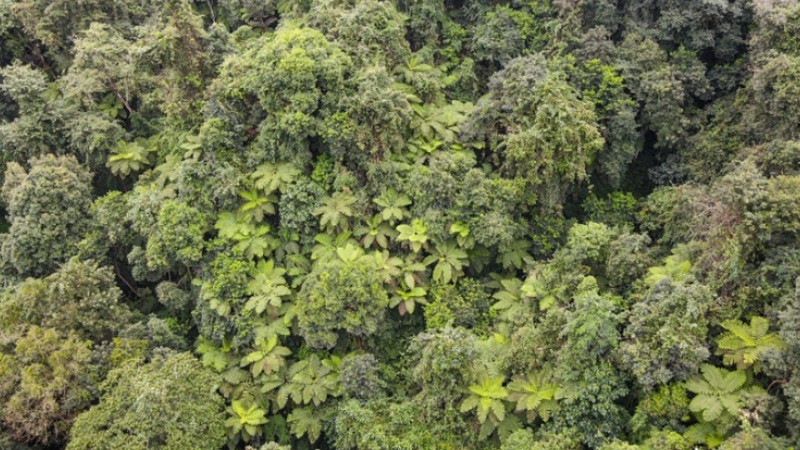Profile: Paleontologist deciphers "characters of the earth" in SW China
GUIYANG, Nov. 19 (Xinhua) -- Walking into the basement of the Geological Museum of Guizhou in the hinterland of southwest China, a soft buzz came out of a room around the corner.
Sitting behind the table, Luo Yongming concentrated on repairing some paleontological fossils with the help of a stereo microscope. With one hand to adjust the focus of the microscope and the other holding an air scribe, Luo was carefully "carving" the shape of a paleontological creature on the fossil.
Luo, 53, has devoted himself to researching Guizhou's paleontological creatures for over two decades. Dedicated to fossil excavation, repair, and research, Luo had already processed thousands of paleontological fossils.
A black fossil of an ancient fish of Kyphosichthys, which was under Luo's repair, dates back to nearly 245 million years ago and was first excavated in Panzhou City of Guizhou Province. Luo spent almost half a year precisely engraving this fossil. Thanks to his hard work, the fish's head, tail, and scales are now presented upon the stone board vividly again.
"It's a unique fish with soft bones and hard scales. Over hundreds of millions of years of fossilization, its scales with special components are relatively preserved intact, allowing people to see its appearance now," said Luo.
Luo points to the fossil, 70 percent of which has been repaired. Luo added that well-preserved fossils carry a lot of precious information, which is very helpful for people to understand such kind of ancient creatures.
The fossil restoration area where Luo works contains a variety of fossils of paleontological species, including Keichousaurus hui, Ichthyosaur, and other ancient marine creatures. "Keichousaurus hui, about 30 centimeters long on average, is relatively small. It looks like a 'four-legged snake,'" Luo explained.
Keichousaurus hui mainly occurred in areas of Xingyi City in Guizhou. It is the first primitive Sauropterygia found in Asia and the earliest Triassic marine reptile fossil discovered, studied, and named in China.
"Although Guizhou is surrounded by countless mountains today, it was a vast ocean more than 200 million years ago," Luo said, adding that the discovery of Keichousaurus hui is of great significance to the study of the evolution of vertebrates, especially marine reptiles, and the paleogeographic environment.
During the middle and late Triassic period, Guizhou, which belongs to the corner of the Tethys Ocean, was home to many marine reptiles.
At present, Guizhou has the largest number of species of Triassic marine reptile fossils in the world. It covers almost all fossil categories globally, including over 2,000 genera and over 5,000 species. Guizhou is also known as the "kingdom of paleontology."
"Fossils are like written records of the Earth's history," Luo said. He explained that studying paleontological fossils is like constantly deciphering these "codes" so people can understand the evolution of life and geological changes more systematically.
In Luo's opinion, this job requires researchers to endure loneliness. "It's difficult to insist on working and studying without the love of fossils."
Luo said restoring fossils sometimes takes four to five hours sitting on a chair. Any slightest distraction may cause irreversible damage to the fossil.
In the exhibition hall of the Geological Museum of Guizhou, numerous restored fossils are like "the art of time." Luo stood still for a very long time in front of a pregnant Ichthyosaur fossil.
"This fossil is extremely valuable. We can see that this Ichthyosaur is pregnant, and its head and chest were attacked before its death. Several parts of its vertebrae were dislocated, and several ribs broken." Luo carefully explained the story behind the fossil.
Years of working experience made Luo realize that every fossil contains unique historical information, and any small discovery may become new historical evidence.
Fossils are precious and non-renewable natural resources. In recent years, Luo has felt gratified as local departments at all levels have paid more attention to fossil protection. Guizhou has gradually set up systematic protection of prominent fossil excavation sites and established 66 provincial key paleontological fossil sites for better protection.
Strengthening fossil protection and upgrading restoration technologies and equipment can further promote paleontological research and science popularization, according to Luo.
"By doing so, the valuable fossils, also known as 'characters of the earth,' can thus be better 'read' and learned about by more people," he added.
Photos
Related Stories
- Chinese geoscientists set new record on shelf coring
- Researchers comprehensively diagnose black land in NE China
- Stories behind a dedicated Chinese geologist's 50-year research on sponge reefs
- China's largest desert probably formed 300,000 years ago: researchers
- Scientists discover new trilobite association over 400 mln years ago in China's Yunnan
Copyright © 2023 People's Daily Online. All Rights Reserved.









